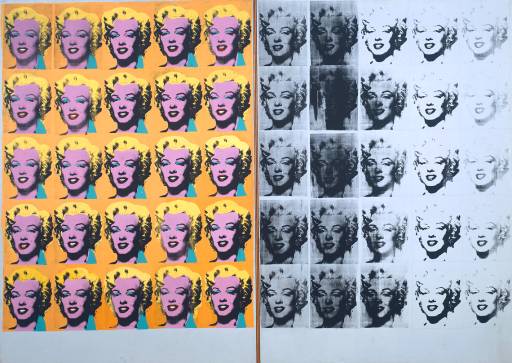Views expressed in opinion columns are the author’s own.
Appropriation is a word that’s been tossed around quite a bit in the past few years, and it’s been controversial in almost every context. Cultural appropriation, a recently divisive topic, is the “adoption or theft of icons, rituals, aesthetic standards and behavior from one culture or subculture by another.”
Appropriation itself originally came to the foreground when pop artists in the ’50s and ’60s took scope of their increasingly commercialized world and incorporated the images they saw into their work. Since the conception of pop art, critics have been almost unable to completely untangle artful appropriation from stealing, just like sociologists still grapple with the nuances between cultural appropriation and cultural exchange.
An interesting variation of these forms of appropriation is almost a reverse of appropriation in art. Just as artists steal from advertisements, popular media, news etc, so does the capitalist sphere steal from artists. The question remains: When does artistic exchange end and exploitation begin?
If art is being used to sell mass-produced products without the artist’s consent, is the product a commercialized way to acknowledge the artistic sentiments that the artist represents, or is it an insult to the artist’s work? There is no black and white answer.
On one hand, Republic Nail Inc. has released a line of beauty products called “Frida Kahlo” after the famed Mexican painter. Each item’s packaging has a simplified rendering of a piece of her art or simply a portrait of her. One portrait in particular strikes me: it is a reproduction of her 1946 piece, “The Wounded Deer.” This painting, which depicts Kahlo as a young buck fatally shot with arrows, is widely interpreted to be a harrowing metaphor of Kahlo’s chronic pain due to her numerous health problems and fruitless struggle to change her own destiny. But today, it’s being used to sell nail polish at CVS. Despite flattering intentions, that just doesn’t sit well, especially considering Kahlo was an outspoken member of the Communist party.
There may be no heuristic way to decide if art should be used to sell a product. If Republic Nails Inc. put a statement on its website as to why the company chose to revere a great painter’s work by putting her image on its products, would this then be appreciation instead of exploitation? That’s for you to decide. Maybe it isn’t as offensive as traditional Hindu bindis being sold as a summer accessory à la cultural appropriation, but maybe it’s slightly more important than the still-annoying people who wear Thrasher t-shirts without having heard of the skateboarding magazine.
We have companies like Uniqlo, who have an entire line of graphic tees emblazoned with the work of Andy Warhol, Jean-Michel Basquiat and Keith Haring. At first, when I saw these, I felt a little annoyed. Here is this multi-million dollar company, presenting itself as eclectic and socially aware by showcasing a collection of tee shirts being sold for $14.90. This seemed like the kind of thing where, with the right advertising, a corporation could make you feel passionate about aspects of culture you may have known very little about, just to make a quick buck.
Upon further consideration, I realized I may be wrong. No, the late Andy Warhol’s estate is not receiving any of the profits from his reproduced work, but the man sure did love capitalism. He once said, “Making money is art and working is art and good business is the best art.” Andy Warhol might’ve actually gotten a kick that his work, which is largely based around exploitation, celebrity and consumer culture, has become part of the culture itself.
There’s an entire social spectrum on how insensitive a small gesture can be, and there’s really no cut-and-dry way to approach it other than to stay educated, be aware and make up your own mind on the statement you or a corporation might be making.
Erin Hill is a freshman psychology major. She can be reached at erin.mckendry.hill@gmail.com.



